The Bombay Mint Restrikes of Australia's Proof Copper Coins - 1942 and 1943

In 1964, coin collectors in Australia and the United States were informed that Australian proof coins were being sold by the Bombay Mint.
The most alarming aspect of this report was that the Australian proof coins available were dated 1942 and 1943 - under normal conventions, production of them had stopped more than two decades earlier.
There was a credible explanation for this incredible revelation however, and the coins are regarded as prized rarities to this day.

Coins from India for Soldiers from America to Spend in Australia
Due to the scarcity of skilled labour and raw materials at our Mints, as well as the limits on manufacturing capacity the war imposed, coins were in very short supply across Australia after the outset of WWII. Once General Eisenhower decided that the US campaign in the Pacific was to be directed from Australia, close to a million US military personnel were based at various locations throughout Eastern Australia in the years between 1942 and 1945.
This number was at least 10% of the Australian population at the time - the arrival of the American forces here had a significant impact on many aspects of daily life in Australia, not least on the number of coins required to lubricate the wheels of commerce.
US servicemen were paid in cash, so the pre-existing scarcity of coinage was exacerbated in areas where they were based.
The US top brass were keenly aware of the potential impact on the morale of their troops if they didn't get paid.
Production of coinage during this period scaled up very quickly as a result - the number of coins struck for circulation in Australia in 1943 was more than ten times the number struck in 1939.
The Australian branch mints were simply not able to cope with this increase in demand, so production of Australia's coins was outsourced to mints as far afield as Bombay, San Francisco and Denver. The US Mints supplemented Australia’s silver coins, while the Bombay Mint was tasked with striking Australian pennies and halfpennies throughout 1942 and 1943.
The number of US servicemen based in Australia eased significantly as the war progressed, and production of Australian coins was again handled solely by Australian mints from 1945 onwards.
Indian Mints - Re-Striking Coins Since the 1890’s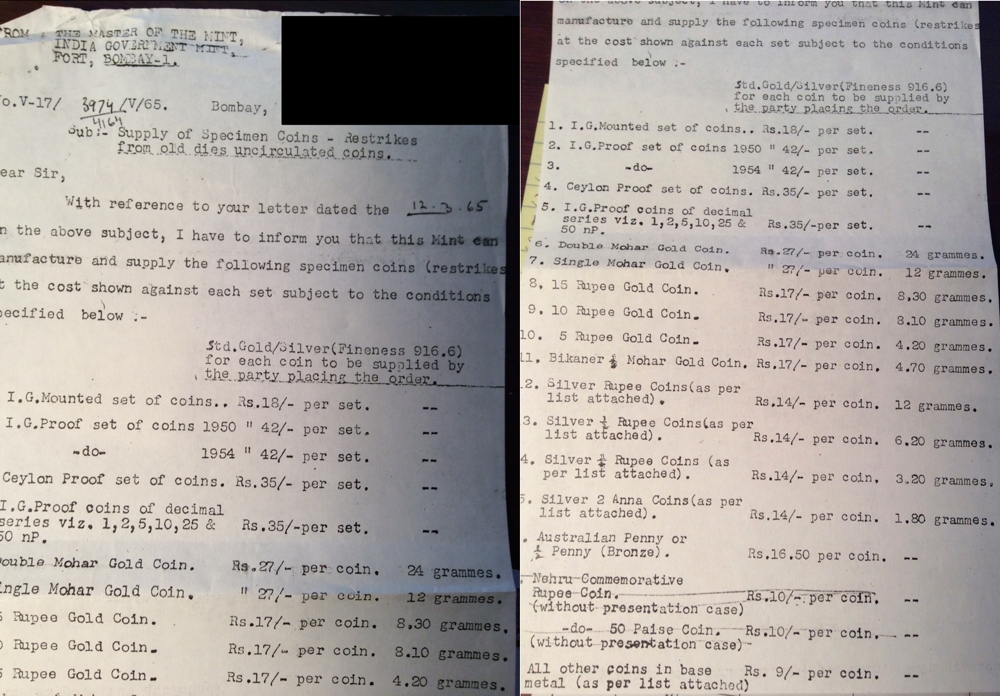
An interesting adjunct to the story that Indian branch mints struck coins for Australia in times of crisis is that authorities on Indian numismatics readily acknowledge that the Indian mints have re-struck many coins for collectors for many decades. The pioneering authority on British Indian coins, Major Frank Pridmore, stated that “The principal period of these ‘original’ proof specimens was from 1890 to 1905.[1]”
“Restrike” is the term used to describe coins that were struck again after the official mintage run ended. For example, if dies used to strike a coin dated 1892 were used to strike more coins in 1927, then the resulting coins are described as being “restrikes”. Those coins were struck using official dies, by Mint staff on the Mint’s premises, so while they are unequivocally genuine, they are correctly described as “restrikes”.
The average collector might regard the practice of re-striking coins as quite unusual, however that opinion clearly wasn’t shared by the staff of the Bombay Mint throughout the 20th century.
The Characteristics of the Three Different Classes of Indian Proof Coins
Pridmore’s summation of these coins, published in his seminal work, “Coins of the British Commonwealth of Nations: Part 4, India : Volume 2” states that there are three distinct classes of proof coins struck by India's mints in the 20th century:
1. Those struck for government use;
2. Those struck for collectors and private individuals prior to 1947; and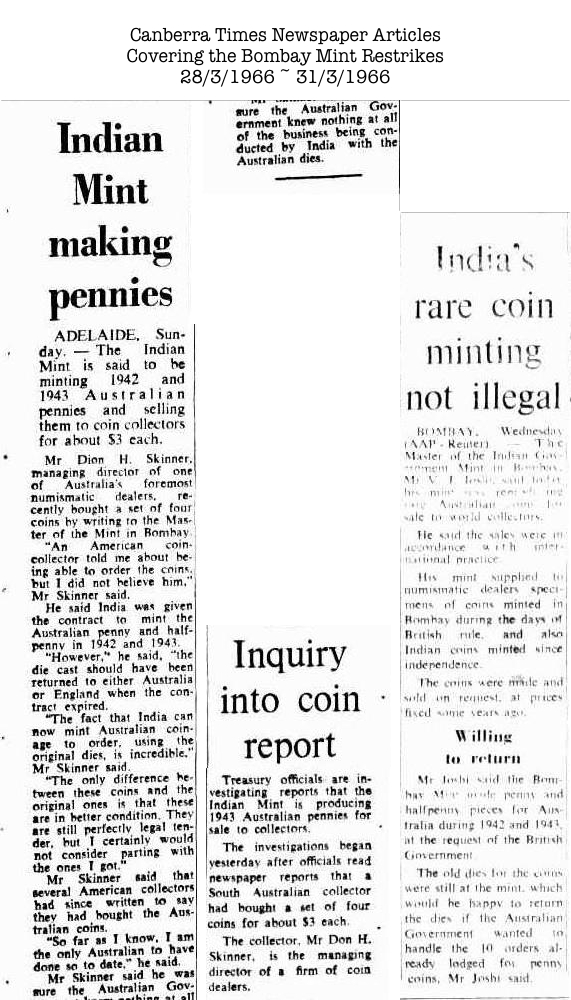
3. Those struck after (Indian) independence in 1947. Of these, Pridmore states that “The earliest of this restrike series appear to have been carried out for Australian collectors, who sought specimens of the Bombay-minted Australian bronze pence and halfpence.” Pridmore further stated that many of the Bombay Mint restrikes featured a “...lacquered finish, particularly the base metal coins.[2]”
Pridmore's taxonomy of these coins has been confirmed in the most comprehensive catalogue of the coins of British India, written by Paul Stevens and Randy Weir. Stevens and Weir state that "proof coins of the series have been produced and reproduced in different circumstances and in different quantities and qualities throughout the period 1835 until about 1870.[3]"
From Pridmore’s comments above, we can see that Indian Mint staff had been periodically re-striking coins since as far back as the late 19th century, so it certainly wasn’t a new, secret or unconventional practice for them. The coins were struck using the original dies, on the Bombay Mint premises, under the full authority of the Bombay Mint staff, so are unequivocally regarded as official coins.
News of the Bombay Mint Restrikes Reaches Australia in 1964
As one might expect for a chapter in Australian numismatics such as this, it is challenging to build an exact chronology of events regarding how news of these coins first reached Australia.
An article by Robert L Clarke, published in the Australian Numismatic Journal in October 1964, stated that the US collector George Falcke advised him that a group of "Sydney collectors"[4] had become aware of the availability of the Bombay restrikes in "early 1964", and that he placed an order for 8 coins in April 1964. Clarke received his coins from the Bombay Mint in September 1964, his article was published shortly after that.
The numismatist Dion Skinner placed an order with the Bombay Mint in around May 1965, and received his coins in March 1966. [5] Shortly after that, he advised the Canberra Times newspaper of the situation, and the story broke on March 28th, 1966. Treasury officials responded publicly via the Canberra Times the next day, and that story was in turn followed by a written response from the Master of the Bombay Mint the day after.
We have to keep in mind that this news broke just 42 days after Australia switched to a decimal currency, so interest in Australian numismatics was at an all-time high. The public was keen to buy memorabilia relating to the nation's new coinage - proof sets of the new coins were not released until October 1967, and there was a strong push for a decimal commemorative coin to be made available.
The idea that in this climate of scarcity, a tiny number of exclusive collectors were able to make use of an archaic back-channel to obtain extremely rare and valuable coins would have horrified Mint and Treasury officials. Political pressure to cut this anomaly off would have been incredibly strong.
Treasury officials "took appropriate action" and, at the request of the Australian Government, the Master of the Bombay Mint, advised that production of the restrikes had ceased. Soon afterwards, the dies were returned to the Royal Australian Mint.
"Proof Coins from Bombay" - The Sequel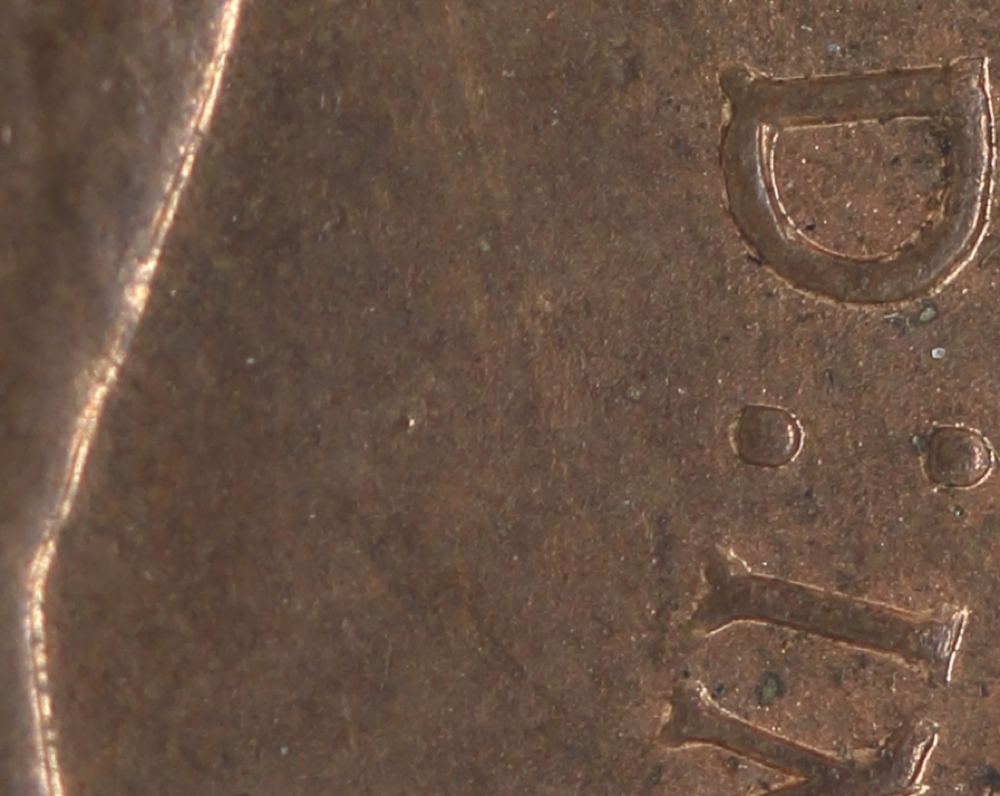
A second article by Robert L Clarke published in the Australian Numismatic Journal in March 1967 ("Proof Coins from Bombay - The Sequel") gives us several incredible points of information that really add to the appeal that these coins have.
The first point is that each of the Australian copper coins struck by the Bombay Mint actually feature a tiny identifying mark that has not yet been widely discussed:
"To digress a few moments from the narrative seems appropriate, because a close examination of the 1942-1943 proof restrikes has revealed an interesting feature first noticed by George Falcke. In the obverse field behind the King's head on all four pieces one can observe a very small diamond. At first inspection, this diamond can pass for a flaw and be dismissed as the result of a pitted die. However, the mark is found in the same position on each date and denomination. Furthermore, during 1942 and 1943 the mint-mark of the Bombay Mint on Indian coins was a diamond rather than a dot. From this analysis one concludes that the mark was deliberate, but since the letter "I" serves as the mint-mark, the purpose of the diamond on Australian bronze is unknown.[6]"
We currently have access to 1943 Bombay pennies in both proof and circulation strike formats - although the diamond is indeed visible in the right obverse field of both coins, they are clearly in different places.
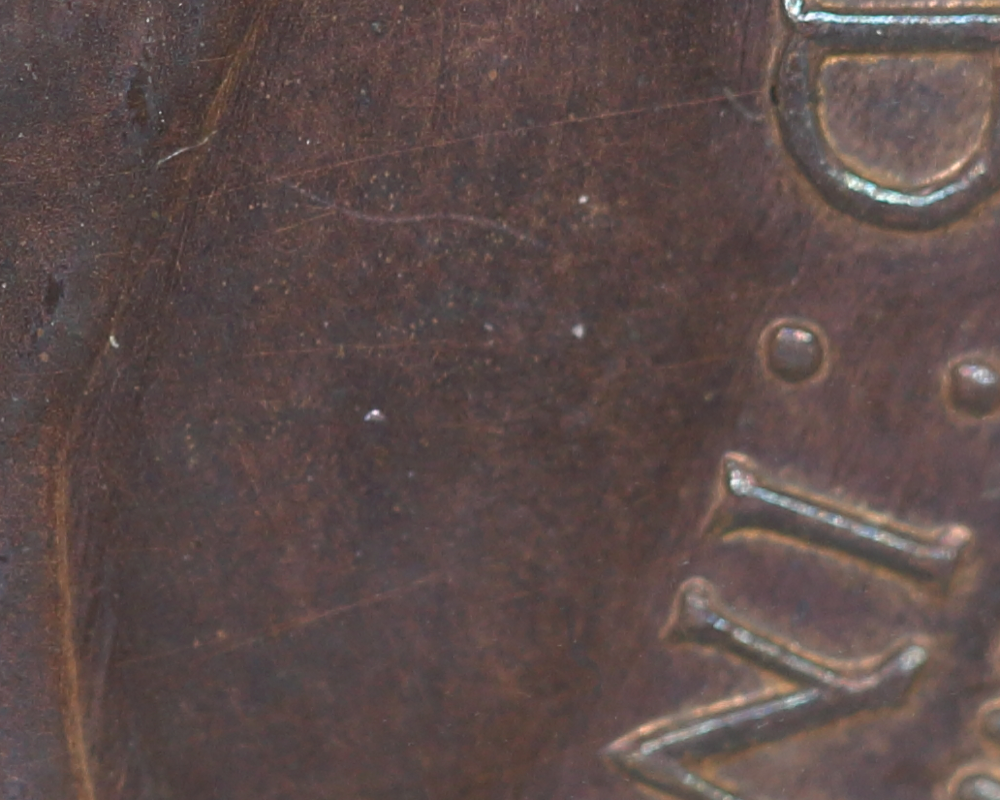 The second fundamental point of information that Clarke was able to ascertain regarding these truly exclusive coins was the mintage figure. Over a period of around 6 months throughout 1966, Clarke corresponded with "his Bombay correspondent", who was finally able to advise that "I had once advised you the coins (Australian pennies and halfpennies) struck were 65 pieces. It was not correct. Please note that it was 65 sets, i.e., 65 pennies and 65 halfpennies as these people used to strike sets of full and halfpenny against the foreign orders.[7]"
The second fundamental point of information that Clarke was able to ascertain regarding these truly exclusive coins was the mintage figure. Over a period of around 6 months throughout 1966, Clarke corresponded with "his Bombay correspondent", who was finally able to advise that "I had once advised you the coins (Australian pennies and halfpennies) struck were 65 pieces. It was not correct. Please note that it was 65 sets, i.e., 65 pennies and 65 halfpennies as these people used to strike sets of full and halfpenny against the foreign orders.[7]"
On first blush, this figure seems particularly high - auction appearances for these coins over the past 30 years or so indicate that the 1942 and 1943 proof Australian copper coins appear as seldom as coins that have been verified to have much lower mintage figures than 65.
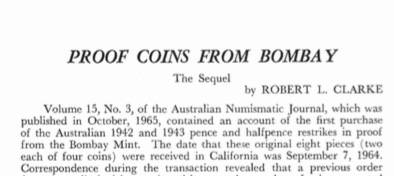 Although the Bombay Mint copper proof restrikes came into existence via an arcane bureaucratic approach that was quickly shut down, they can be counted among the Australia's most desirable coins when numismatics was at it's apex in this country - just after the switch to decimal currency in 1966.
Although the Bombay Mint copper proof restrikes came into existence via an arcane bureaucratic approach that was quickly shut down, they can be counted among the Australia's most desirable coins when numismatics was at it's apex in this country - just after the switch to decimal currency in 1966.
Footnotes:
[1] Pridmore; Frank, "The Coins of the British Commonwealth of Nations. Part 4, Volume 2", Spink & Son, London, 1980, p 91.
[2] Pridmore; Frank, "The Coins of the British Commonwealth of Nations. Part 4, Volume 2", Spink & Son, London, 1980, pages 90 - 91.
[3] Paul Stevens & Randy Weir, "The Uniform Coinage of India", Spink, London, 2012, p iv.
[4] Clarke; Robert L, "Proof Coins from Bombay - The Sequel" in the Australian Numismatic Journal, Volume Volume 18 Number 1, March 1967, p 136.
[5] Skinner; Dion, "Australian Coin and Banknote Values", Renniks Publications, Adelaide , 1989, p 66.
[6] Clarke; Robert L, "Proof Coins from Bombay - The Sequel" in the Australian Numismatic Journal, Volume Volume 18 Number 1, March 1967, p 137.
